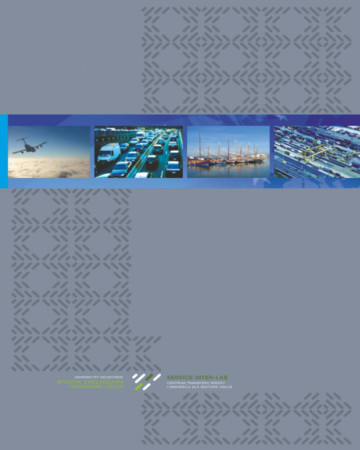
ISSN: 1644-275X
eISSN: 2353-3005
OAI
DOI: 10.18276/ptl.2018.43-05


Issue archive /
nr 3 (43) 2018
ZMIANA W STRUKTURZE PRZEWOZÓW LĄDOWYCH ŁADUNKÓW W ŚWIETLE WYZWAŃ ZRÓWNOWAŻONEGO ROZWOJU
(The change of the freight transport structure in the light of the challenges presented by sustainable development)
| Authors: |
Sylwia
Kowalska
Wydział Zarządzania i Ekonomiki Usług, Uniwersytet Szczeciński Agnieszka Gozdek Wydział Zarządzania i Ekonomiki Usług, Uniwersytet Szczeciński |
| Keywords: | sustainable developement modal split freight transport |
| Data publikacji całości: | 2018 |
| Page range: | 10 (51-60) |
| Klasyfikacja JEL: | R41 |
Abstract
The article analyzes and assesses the current structure of freight transport in Poland and other EU
countries. Forecasts that will take place in the future perspective was also evaluated. The analysis was
based on the secondary researches and the results were evaluated in terms of realizing the assumptions
of the idea of sustainable development.
In the paper will be attempted to answer questions about future trends within the European Commission’s
objectives established because of the need to implement the idea of sustainable development.
The results of the research indicated the chances of an modal shift from road to rail transport, which
is in line with the paradigm of the modal shift. It is pointed out that in order to raise the probability
of achieving the assumed goals related to modal shift, the focus should he ont the use of tools and coordination
of activities that will help achieve the set goals.
Download file
Article file
Bibliography
| 1. | A Sustainable Europe for a Better World: A European Union Strategy for Sustainable Development. |
| 2. | Burnewicz, J. (2007). Wizja struktury transportu oraz rozwoju sieci transportowych do roku 2033 ze szczególnym |
| 3. | uwzględnieniem docelowej struktury modelowej transportu. Ekspertyza dla Ministerstwa Rozwoju Regionalnego. |
| 4. | Sopot. |
| 5. | CEOC (2001). Biała Księga (2011). Plan utworzenia jednolitego europejskiego obszaru transportu – dążenie do osiągnięcia |
| 6. | konkurencyjnego i zasobooszczędnego systemu transportu. Bruksela: Komisja Europejska. |
| 7. | Drewnowski, A., Małachowski, K. (2015). Wpływ rewitalizacji przewozów na linii kolejowej Ulikowo–Kalisz Pomorski– |
| 8. | Wałcz (Piła Gł.) na wzrost konkurrencyjności regionu i mobliności jego mieszkańców. Problemy Transportu |
| 9. | i Logistyki, 871 (30), 25–36. |
| 10. | Eurostat (2018). Pobrane z: http://ec.europa.eu/eurostat/statistics-explained/index.php?title=File:Modal_Split_of_inland_ |
| 11. | freight_transport,_2016_(%25_of_total_tonne-kilometres).png (5.07.2018). |
| 12. | Miłaszewicz, D., Ostapowicz, B. (2011). Warunki zrównoważonego rozwoju transportu w świetle dokumentów UE. |
| 13. | Gospodarka. Zarządzanie. Środowisko. Studia i Prace WNEiZ, 24, 103–118. |
| 14. | Przybyłowski, A. (2012). Rozwój transportu w polskich regionach w kontekście koncepcji zrównoważonego transportu |
| 15. | UE. Logistyka, 2, 241–251. |
| 16. | Raport (2011). External Costs of Transport in Europe. |
| 17. | Report of the World Comission on Environment and Developement:Our Common Future (1987). |
| 18. | Requirements Toward the freight system of 2030–2050 (2015). Capacity for Rail. |
| 19. | Rydzkowski, W. (red.) (2017). Współczesna polityka transportowa. Warszawa: PWE. |
| 20. | Załoga, E. (2013). Trendy w transporcie Unii Europejskiej. Szczecin: Wyd. Naukowe US. |
| 21. | Załoga, E., Milewski, D. (2015). Zrównoważony rozwój transportu jako wyzwanie ekonomiczne. Problemy Transportu |
| 22. | i Logistyki, 30, 141–151. |